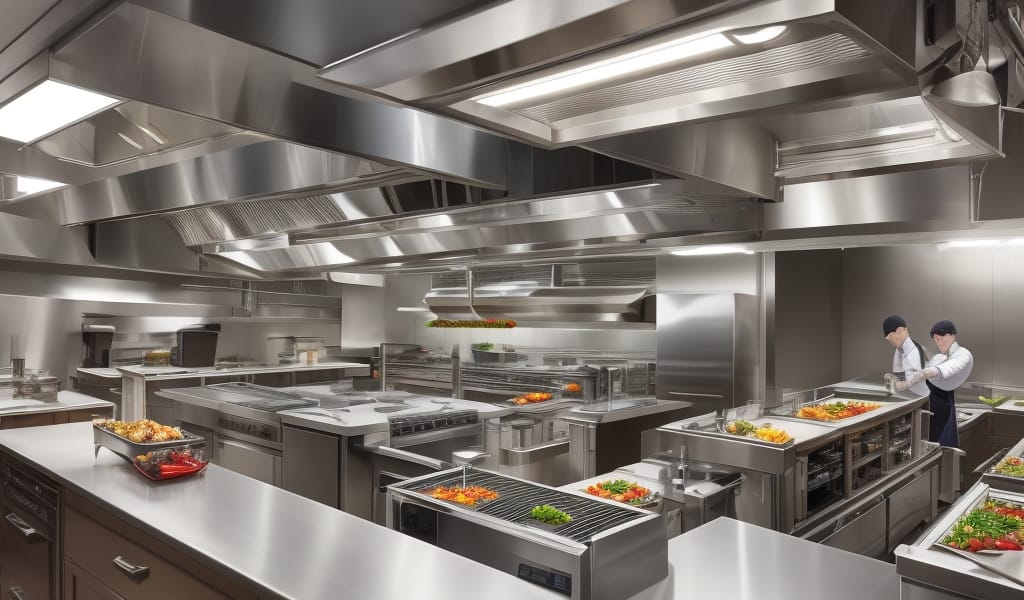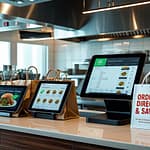Key Takeaways:
- Understand your food and beverage costs to accurately price menu items for profitability.
- Use customer psychology to offer higher-priced items in a more appealing way, such as including premium ingredients or exceptional presentation.
- Regularly review your menu pricing strategy to ensure it remains competitive and relevant to market changes.
- Utilize a variety of pricing strategies, like bundle pricing or time-based pricing, to increase overall profits.
- Monitor customer reactions and sales data after pricing changes to make sure you aren’t losing clientele.
How to Price Your Menu for Profit (Without Losing Customers)
Master pricing that works for you and your guests
Pricing your menu properly is one of the most crucial yet challenging tasks for restaurant owners and managers. It’s a delicate balance between maximizing profits and ensuring you don’t price yourself out of the market. Too high, and you risk losing valuable customers; too low, and your profitability suffers. Understanding customer psychology and employing strategic pricing methods can significantly enhance your F&B profits without alienating your guests.
In this article, we’ll explore practical strategies to effectively price your restaurant menu, leveraging customer psychology and proven industry methods to drive profitability.
Understanding Your Costs: The Foundation of Effective Pricing
Calculating Food Costs Accurately
The first step toward pricing effectively is understanding your costs clearly. Calculate your food costs by determining the total cost of ingredients necessary to produce each menu item. This includes everything from main ingredients down to seasonings and garnishes. Ensure you regularly update these calculations as supplier prices fluctuate.
- List all ingredients and their respective costs per unit.
- Account for waste and spoilage.
- Regularly review and update your food costs.
Factoring in Overhead Expenses
Beyond food costs, consider overhead expenses such as rent, utilities, salaries, marketing, and taxes. Overhead allocation should be proportionally factored into your menu prices. A precise understanding of these costs is essential to ensure your menu pricing strategy aligns with profitability goals.
Implementing Strategic Pricing Models
Cost-Plus Pricing
Cost-plus pricing is the simplest and most straightforward model. Determine the total cost of each dish and then add a percentage markup to ensure profitability. Typically, restaurants aim for a food cost percentage between 25% and 35%.
For example, if your total food cost for a particular dish is $5 and your target food cost percentage is 30%, the selling price would be calculated as follows:
- Selling price = Food cost / Target food cost percentage
- Selling price = $5 / 0.30 = $16.67
Value-Based Pricing
Value-based pricing involves setting prices based on perceived value rather than strictly cost. This approach considers customer psychology, competitor pricing, and your restaurant’s unique selling points. High-quality ingredients, exceptional service, and ambiance can justify higher pricing.
- Analyze your target customers’ willingness to pay for premium experiences.
- Research competitor prices to position your restaurant effectively.
- Clearly communicate value through menu descriptions.
Leveraging Customer Psychology in Menu Pricing
The Power of Menu Engineering
Menu engineering is an analytical process of placing and highlighting items strategically to drive sales. By categorizing dishes into four segments—stars, plow horses, puzzles, and dogs—you can optimize your menu for maximum profitability.
- Stars: High popularity, high profitability. Highlight prominently.
- Plow Horses: High popularity, low profitability. Consider slight price increases or ingredient adjustments.
- Puzzles: Low popularity, high profitability. Market these items better or adjust menu placement.
- Dogs: Low popularity, low profitability. Consider removing or redesigning these items.
Charm Pricing and Psychological Strategies
Charm pricing leverages psychological aspects to influence perceptions of value. Pricing items just below a round number (e.g., $9.95 instead of $10) can significantly boost sales. Additionally, menu design tactics, such as omitting dollar signs and using descriptive language, can enhance guest perceptions of value.
- Avoid listing prices in a straight column to discourage price comparisons.
- Use visually appealing fonts and descriptive language to emphasize value-driven dishes.
- Consider price anchoring by placing higher-priced items next to moderately priced dishes to make the latter seem more affordable.
Adapting Prices to Your Market and Audience
Understanding Customer Demographics and Preferences
Each restaurant attracts a unique clientele with varied expectations and spending habits. Conduct regular market research to understand your customers’ preferences and willingness to pay. Tailoring your pricing strategy to align with your audience’s expectations ensures you maintain customer loyalty while maximizing profits.
- Gather customer feedback through surveys and reviews.
- Analyze sales data to identify trends and preferences.
- Regularly reassess and adapt your pricing strategy accordingly.
Adjusting Prices Seasonally and Strategically
Market fluctuations, seasonal ingredient availability, and demand variations should inform your pricing decisions. Seasonal pricing adjustments can help you maintain profitability while appealing to customer expectations for freshness and quality.
- Offer seasonal specials or limited-time dishes at premium pricing.
- Regularly update the menu to reflect ingredient availability and market prices.
- Clearly communicate the value and exclusivity of seasonal offerings to justify pricing.
Monitoring and Adjusting Menu Prices Over Time
Regularly Review Sales and Profitability
Pricing strategies should not be static. Regularly reviewing sales data, profitability metrics, and customer feedback helps inform necessary adjustments. Staying proactive enables you to respond to changing market conditions, ingredient costs, and customer preferences effectively.
- Perform monthly or quarterly profitability analyses.
- Track ingredient cost fluctuations closely.
- Identify underperforming items and adjust pricing or remove them from the menu.
Case Study: The Successful Price Adjustment at Bistro Delight
Bistro Delight, a casual dining establishment, noticed declining profits despite steady customer traffic. By conducting a menu analysis, they discovered several popular dishes were significantly underpriced. They implemented a gradual price increase, accompanied by improved menu descriptions emphasizing fresh, locally sourced ingredients. The result was a 12% increase in profitability with no negative impact on customer satisfaction or traffic.
Conclusion: Striking the Perfect Balance
Effectively pricing your restaurant menu is both an art and a science. It requires detailed cost analysis, strategic pricing methods, an understanding of customer psychology, and ongoing monitoring and adjustments. By carefully balancing costs, perceived value, and market dynamics, you can maximize your F&B profits without losing valuable customers. Remember, a well-executed menu pricing strategy not only boosts profitability but also enhances the overall dining experience, ensuring long-term success for your restaurant.






Comments
Be the first to comment on this article.